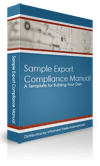Deemed Export Regulations: What Constitutes a Release?
Release need not be concerted, voluntary, or even intentional. Conduct qualifying as a “release” under EAR and ITAR includes, but is not limited to: a) allowing a foreign person to visually inspect or otherwise view the technology or data; and b) oral discussions, whether over the phone, through a video-conferencing program, or in-person.
Under EAR and ITAR, the release of controlled technology or technical data is usually not a function of intentional, organized effort to violate deemed export regulations. As all of this terminology may be somewhat confusing at first, let’s consider an example to help clarify.
Suppose that you invite a group of foreign clients to visit your US facility. You have a few meetings to discuss a potential sale of non-controlled technology. Later, you ask an employee to give the clients a tour of the facility to engender a sense of trust in the clients. As the clients are touring the facility, however, they are accidentally taken to an area where certain controlled technology is located. The clients see the technology.
Despite the fact that this was not a “planned” viewing of the technology, the foreign clients’ introduction to the controlled technology constitutes a violation of deemed export regulations under EAR and ITAR. Any fines levied against you and your firm will likely take into account the lack of intention, of course.
Visual inspection or viewing is not limited to a direct in-person glimpse of the technology or data at-issue. If a foreign person sees a photograph or other representation of the technology/data (in an email, PowerPoint slides, text messages, among various other formats), then the viewing still qualifies as a release under EAR and ITAR. As such, all communications containing information related to the controlled technology or technical data should be separated in a manner that prevents unwanted disclosures to foreign persons.
Posted on November 29th, 2016 by admin
Filed under: EAR, ITAR

